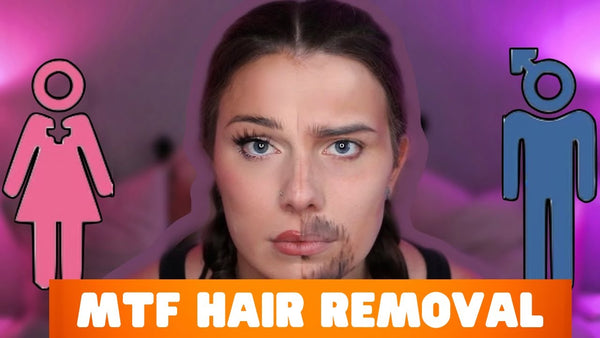Navigating Insurance Coverage for Transgender Hair Removal: A Step-by-Step Guide
Why is Insurance Coverage for Transgender Hair Removal Important?
Transgender individuals often undergo a gender-affirming journey, which may involve various medical procedures, including hair removal.
While hair removal is an essential part of gender transition for many, the cost can be a significant barrier.
That's where insurance coverage comes in.
Understanding how to navigate insurance policies and find transgender-inclusive providers can make a world of difference in accessing this important aspect of gender-affirming care.
Researching Insurance Policies
The first step in exploring insurance coverage for transgender hair removal is to research different insurance policies.
Look for policies that explicitly mention coverage for transgender healthcare services.
Some insurance companies may have specific exclusions or limitations, so it's crucial to review the policy details carefully.
Additionally, check if the policy covers hair removal as a medically necessary procedure.
Understanding Coverage Options
Insurance coverage for transgender hair removal can vary depending on the type of insurance.
Private insurance plans, employer-based plans, and government-sponsored plans may have different coverage options.
Private plans often offer more flexibility, while employer-based plans may have specific coverage criteria.
Government-sponsored plans, such as Medicaid, may have their own guidelines for coverage.
Familiarize yourself with the coverage options available to you.
Finding Transgender-Inclusive Providers
Once you have identified potential insurance policies, the next step is to find transgender-inclusive providers.
Look for healthcare providers who have experience working with transgender individuals and are knowledgeable about gender-affirming procedures.
They can guide you through the process, provide the necessary documentation, and help you navigate insurance requirements.
Documentation and Medical Necessity Requirements
Successful insurance claims for transgender hair removal often require specific documentation and evidence of medical necessity.
This may include letters from healthcare professionals, mental health providers, or gender specialists, explaining the medical need for hair removal as part of the gender-affirming journey.
Familiarize yourself with the documentation requirements of your insurance policy to ensure a smooth claims process.
Advocating for Coverage
Advocacy plays a crucial role in obtaining insurance coverage for transgender hair removal.
If your insurance denies coverage initially, don't be discouraged. You have the right to appeal the decision.
Gather all necessary documentation, including letters of medical necessity, and submit a formal appeal.
Consider involving LGBTQ+ advocacy organizations or legal resources that specialize in transgender healthcare rights.
Overcoming Common Challenges
While navigating insurance coverage for transgender hair removal, you may encounter common challenges.
These can include denials of coverage, lack of transgender-inclusive providers in your area, or confusion about the claims process.
Reach out to support groups, online communities, or LGBTQ+ organizations for guidance and assistance.
They can provide valuable insights and share strategies for overcoming these challenges.
Conclusion
Insurance coverage for transgender hair removal is an important aspect of gender-affirming care.
By researching insurance policies, understanding coverage options, finding transgender-inclusive providers, and advocating for coverage, transgender individuals can overcome barriers and access the necessary care they deserve.
Remember, you are not alone in this journey, and there are resources available to support you every step of the way.
|
As you embark on your journey to manage unwanted facial hair, consider the benefits of at-home hair removal solutions. The KetchBeauty V4.1 IPL handset, for example, offers a convenient and effective way to reduce hair growth in the comfort of your own home. It utilizes Intense Pulsed Light (IPL) technology to target hair follicles and inhibit regrowth. |

